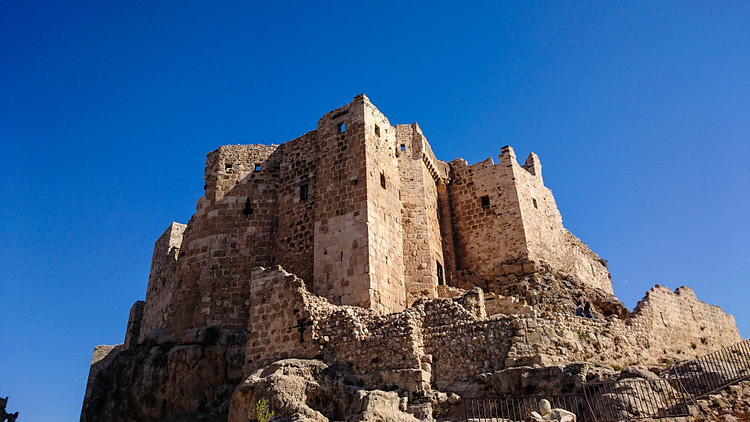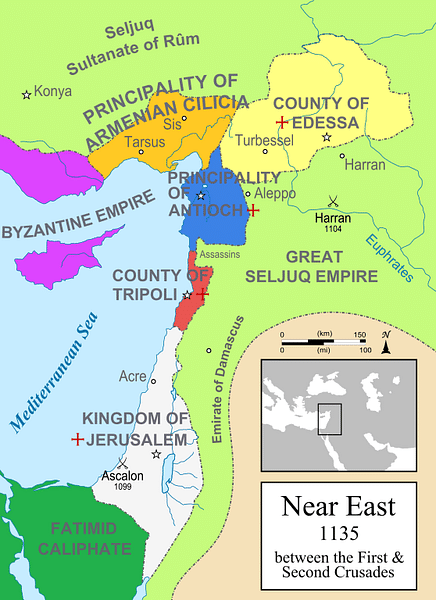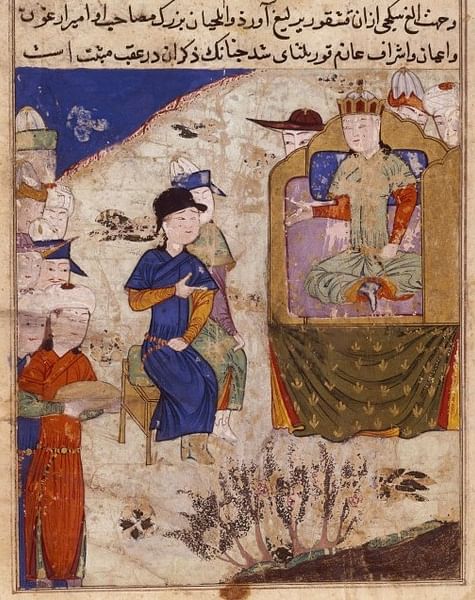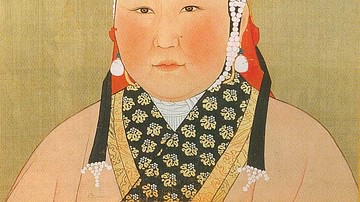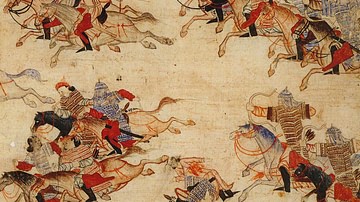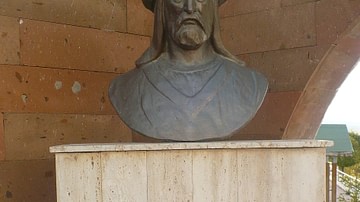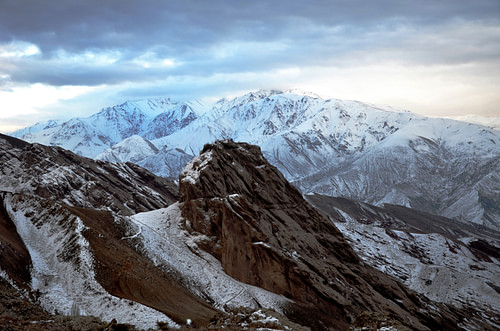
The Assassins (aka Nizari Ismailis), were a heretical group of Shiite Muslims who were powerful in Persia and Syria from the 11th century CE until their defeat at the hands of the Mongols in the mid-13th century CE. Secure in their fortified hilltop castles, they became infamous for their strategy of singling out opposition figures and murdering them, usually in knife-wielding teams. The group was known as the Assassins by their enemies in reference to their use of hashish, 'assassin' being a corruption of the Arabic hasisi ('hashish-eater'), and so the name has since come to be associated with their chief modus operandi, the act of murder for political or religious purposes. The Nizari Ismailis continue to exist as a branch of Islam today.
The Assassin Name
The Nizari Ismailis ate powdered hemp leaves (hashish) which contain a natural psychoactive (mind-altering) drug, reportedly doing so before they went on an assassination mission. The name 'Assassin' in English comes from the Latin term assassinus, which is a corruption of the Arabic words hasisi, al-Hashishiyyun or hashashun, meaning 'hashish-eater.' As the Nizari Ismailis used the strategy of assassination so often, the name medieval Arabs used to describe their drug habits became synonymous with the act of murdering a political or religious opponent.
The use of drugs by the Assassins may have been a way for their enemies to explain their extraordinary abilities and willingness to die for their cause. Alternatively, they may never have used any such stimulants and their reputation as drug users was rather a fictional demonisation or invented excuse for their unnaturally high success rate in killing people and the almost complete ineffectiveness of anyone to stop them.
Heretical Beliefs
The Ismailis were a Shiite Muslim sect formed in the 8th century CE after they split from other Muslims over their adherence to Ismail (d. 760 CE), the eldest son of the sixth imam (leaders of the faith after the Prophet Muhammad), Jafar al-Sadiq (d. 765 CE). The Ismailis believed that Ismail, despite predeceasing his father, had already been nominated by the latter as his successor. Therefore, the next (7th) imam was Ismail's son Muhammad al-Mahdi, as opposed to the orthodox Shiite support for Ismail's brother Musa al-Kazim (d. 799 CE). For this reason, the Ismaili's are often referred to as the 'Seveners.' The Ismailis awaited the arrival of the Mahdi or 'the rightly-guided one' who would restore peace and justice, and signal the arrival of the Qa'im, 'the bringer of the Resurrection.'
The Ismailis were, then, seen as heretics by other Muslim groups, not only by other Shiite Muslims but also the Sunnis of the Abbasid Caliphate (750-1258 CE) based at Baghdad. In the late 11th century CE, the Ismailis themselves split into two groups after a dynastic dispute and their disappointment of the Ismaili-run Fatimid Caliphate (909-1171 CE), then based at Cairo, to progress their ambition to dominate all of the Muslim world. The eastern-based branch of the sect, the Nizari Ismailis, were named after their preferred candidate for caliph, Abu Mansur Nizar (1047-1097 CE). The Nizaris were more militant than their rival Ismaili branch, and it was they who became known as the Assassins.
The Assassin Territories
The Nizari Ismailis, first led by a missionary from Egypt, Hasan Ibn al-Sabbah (c. 1048-1124 CE), set up bases in Iran and formed a new political-religious community much like the European orders of medieval knights. Members were educated, trained, and initiated, then ranked according to their knowledge, reliability, and courage. All members swore absolute obedience and loyalty to the order's leader.
The sect grew and eventually managed to acquire a string of hilltop castles between 1130 and 1151 CE. Many strongholds were located in northern Syria in the Jabal Ansariyya region, then a border zone with the Syrian Crusader States. These acquisitions included the fortress town of Masyaf in the Orontes valley of Syria, taken c. 1141 CE, which effectively became the Nizari capital of an Assassin 'mini-state' in Syria. The failure of the Second Crusade (1147-49 CE) to retake Edessa from Muslim control and the destruction of two armies commanded by the German king Conrad III (r. 1138-1152 CE) and Louis VII, King of France (r. 1137-1180 CE) permitted the Nizari Ismailis to remain unchallenged in northern Syria even if they did occasionally pay tribute to the Crusader States to maintain their isolation or even support them in the wars against the Sunni Muslims of the region.
By the 13th century CE, the sect had spread and there were Nizari Ismailis in Egypt, Syria, Yemen, southern Iraq, southwest Iran (Khuzestan), and Afghanistan, although they remained essentially isolated from their enemies and each other, but at least well-protected, in their impregnable castles. Rumour spread, nevertheless, of their existence and the head of their sect became known to the West via the crusaders, as the 'Old Man of the Mountain.' This title was particularly associated with Sheikh Rashid al-Din Sinan (r. 1169-1193 CE).
One of the most important of the mountain retreats was Maimun-Diz, located in the north of the Alamut Valley, south of the Caspian Sea (aka Alamut Castle or by its nickname the 'eagle's nest'). The castle, one of the first to be taken by the Assassins in 1090 CE, was the headquarters of the sect in Iran and home of the order's Grand Master or 'Old Man.' The Assassin castles were built of stone with wooden upper structures but some were complex defensive arrangements. Masyaf castle was one such example with concentric walls and a castle keep.
The Assassination Strategy
The Assassins did not enjoy a great military strength and so their strategy of targeting specific and powerful opponents was a good one. The weapon of choice for assassination was almost always the knife, and the mission was usually carried out by a small team, sometimes in disguise as beggars, ascetics, or monks. The assassination was often planned to be carried out in a crowded location to maximise the political and religious consequences of the act. The assassins were not expected to survive their mission and were known as fidain (sing. fidai) or 'suicide commandos.'
That men were willing to die for the 'Old Man of the Mountain' is clear but the reasons why are not. Marco Polo (1254-1324 CE), the Venetian explorer, offers the following explanation in his Travels, an account of his adventures across Asia in the last quarter of the 13th century CE, information which may also explain the real use of hashish amongst the Assassins:
The Old Man was called in their language Al-eddin…In a beautiful valley enclosed between two lofty mountains, he had formed a luxurious garden, stored with every delicious fruit and every fragrant shrub that could be procured…Palaces of various sizes and forms were erected…The inhabitants of these palaces were elegant and beautiful damsels, accomplished in the art of singing, playing upon all sorts of musical instruments, dancing and especially those of dalliance and amorous allurement…At his court, likewise, this chief entertained a number of youths…To them he was in the daily practice of discoursing on the subject of the paradise announced by the prophet…and at certain times he caused opium to be administered to ten or a dozen of the youths; and when half dead with sleep he had them conveyed to the several apartments of the palaces in the garden. Upon awakening….each perceived himself surrounded by lovely damsels, singing, playing, and attracting his regards by the most fascinating caresses, serving him also with delicate viands and exquisite wines; until intoxicated with excess of enjoyment…he believed himself assuredly in Paradise…When four or five days had thus been passed, they were thrown once more into a state of somnolency, and carried out of the garden…Questioned by him [the Old Man] as to where they had been, their answer was, 'in Paradise, through the favour of your highness.' The chief thereupon addressing them, said: 'We have the assurances of our prophet that he who defends his lord shall inherit Paradise, and if you show yourselves devoted to the obedience of my orders, that happy lot awaits you.'
(Bk 1, Ch. XXII)
There is a corroborating passage from a text called the Xishiji by Chang-de, the Chinese government official and traveller, written in 1263 CE. Here, Chang-de notes that the Assassins:
…spotted any strong man [and] they lured him with material goods…They intoxicated him, escorted him to a basement and entertained him with music and beauty. They let him indulge in sensual pleasure…At the time he woke up…they taught him that if he could die as an assassin, he would live in joy and comfort like that.
(quoted in Hillenbrand, 24)
The Targets
Infamous victims of the Assassins included the great and powerful vizier of Baghdad, Nizam al-Mulk, murdered on 14 October 1092 CE. Another successful target, and the first Christian victim, was Raymond II, the Count of Tripoli, in 1152 CE. Raymond (r. 1137-1152 CE) had probably upset the Assassins by granting the Knights Hospitaller a swathe of land near their base in the Nosairi Mountains in Syria. The murder brought a massacre of all indigenous easterners in the County of Tripoli in a crude and unsuccessful attempt to find the guilty parties.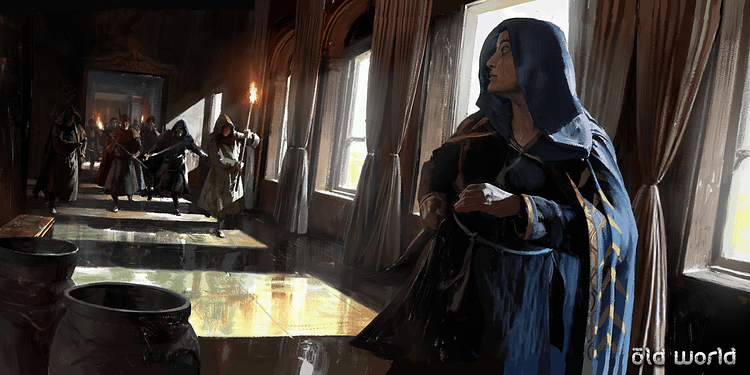
Sometimes the assassins were so effective that nobody was quite sure it was they who had perpetrated the crime. One such victim was Maudud, the atabeg of Mosul who was attacked in a courtyard while walking home from prayers at the Grand Mosque of Damascus on 2 October 1113 CE. The single assassin approached the atabeg asking for alms and then grabbed his belt and stabbed him twice in the stomach. The assassin was caught, beheaded and his body burned but it was only a suspicion that he had been sent by the Nizari Ismailis. One wonders, then, just how many mysterious deaths might really be attributed to the Assassins and, conversely, how many deaths which had no connection with them at all were credited to the secret sect.
One near victim was Saladin, Sultan of Egypt and Syria (r. 1174-1193 CE). Saladin, a Sunni Muslim, had earned the Assassins' wrath by publicly proclaiming that all Muslim heretics would be crucified. The Assassins responded in their tried and tested way. Twice, though, assassins failed to kill their target. First, in 1175 CE, a group of 13 failed to get close to their victim and the second time, in 1176 CE, four assassins only managed to pierce Saladin's cuirass and slash a cheek before they were butchered by the sultan's bodyguard.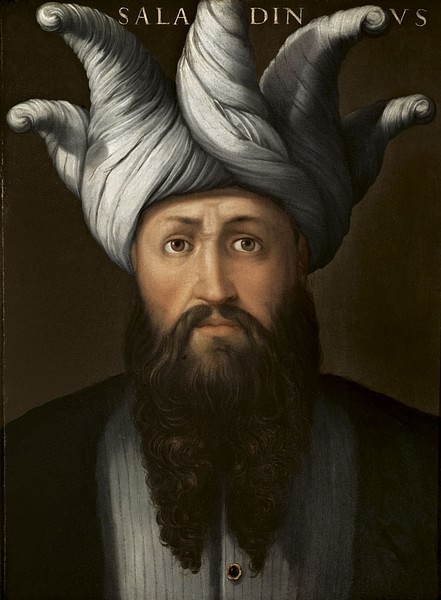
Yet another version of the events has an emissary from the Assassins granted an audience with Saladin who stood safely behind two of his most trusted bodyguards. The emissary then asked the guards would they kill the sultan if he asked them to and they replied, 'certainly.' A little fanciful perhaps that the Sultan's entourage would be so infiltrated by Assassins but the morale of all three versions of the tale is clear: no person could escape the Assassins indefinitely if they had selected you as their target. Whatever the true version, Saladin got the message and negotiated a mutually beneficial non-aggression pact with the Assassin leader in Syria.
It is no surprise, then, that with their impressive résumé of powerful but distinctly dead victims, the Assassins became so feared for their effectiveness that rulers went around continuously wearing chain mail under their extravagant robes. Even Saladin, after his brush with the Assassins, took to sleeping in a purpose-built wooden tower rather than a tent and dismissing anyone from his presence he did not personally recognise.
Destruction by the Mongols
Mongke Khan, the Great Khan of the Mongol Empire (r. 1251-1259 CE) had made his younger brother Hulegu (d. 1265 CE) viceroy of Iran. Hulegu was given an army and told to go on campaign and expand the empire in the west. This he did with great success, and on the way, he defeated the Assassins in 1256 CE by taking their previously thought impregnable castles one by one, including Alamut. The Assassins had made the strategic error of carrying out one of their infamous hits on a Mongol commander, one Chaghadai, and the previous Great Khan, Guyuk (r. 1246-1248 CE), had already singled them out as troublesome insubordinates to the Mongol hegemony.
The Mongols were successful thanks to their technologically advanced siege machines and catapults which could, amongst other missiles, throw gunpowder bombs great distances with accuracy and power. In order to fire at the Assassin castles perched on their mountaintops, the Mongols often laboriously climbed an adjacent peak and carried up their catapults and siege crossbows in pieces; from there they were able to fire across at the enemy. The Assassins did not passively sit behind their fortification walls, though, and had their own catapults and handheld crossbows which inflicted significant casualties on the Mongols. As the Persian historian Ata-Malik Juvayni (1226-1283 CE) rather romantically describes in his history of the Mongol Empire, in one such attack:
…the young men were splitting hairs with lance like arrows and themselves flinching before neither stone nor arrow. Arrows, which were the shaft of Doom discharged by the Angel of Death, were let fly against these wretches, passing like hail through the sieve-like clouds.
(quoted in Turnbull, 55)
In the end, the castles were taken - often helped by parading the captured Assassin grandmaster Rukn al-Din Khur-Shah in front of the walls - and the sect was repressed. As a final blow, Mongke ordered Rukn al-Din Khur-Shah to travel to Karakorum, the Mongol capital, for an audience, then refused to see him and finally had him executed while travelling on his way home - trampled to death by his guards. This 'bloodless' death was the usual treatment for a ruler who had foolishly ignored the Mongols' initial diplomatic overtures and not simply surrendered before the first catapult had been sprung. Rukn al-Din Khur-Shah could hardly have cause for complaint having previously dispatched 400 Assassins in an unsuccessful bid to murder Mongke.
The remaining Assassin castles fell in their turn and their inhabitants - including men, women, and children - were slaughtered; those women and children lucky enough to survive were sold into slavery. The Nizari Ismailis were thus ultimately all but exterminated in Persia, but a few castles did survive in Syria before they were attacked by the Mamluk leader, Al-Zahir Baybars, Sultan of Egypt and Syria (r. 1260-1277 CE). By the 1270s CE, many former Assassin castles had been taken over by the Mamluks. There were still a few Ismailis in hiding even then, for in the 19th century CE a group is known to have moved on to India where they founded a small and still-heretical community. When the Mongols moved on to their bigger target of Baghdad, mainstream Muslims ransacked the Assassin libraries which had not already been destroyed by the Mongols, especially the famed library of Almut Castle, saving many ancient texts (most of which ended up at Maragheh, Iran) but also burning any that related to the heretical beliefs of the Ismailis and leaving historians with but meagre and ultimately unsatisfactory textual remains with which to piece together the history of the Assassins.
Legacy
The medieval Assassins might have long gone but the Nizari Ismailis continued as a branch of Shiite Islam, and their leaders came to be represented by the Agha Khans of Iran from 1817 CE. The current leader or imam of the Nizari Ismailis is Prince Shah Karim al-Husseini, Aga Khan IV (r. 1957 CE - present). Many of the Ismaili ruined castles can still be seen by those intrepid enough to discover them; good examples include Alamut and Masyaf. The sect has also gained a whole new level of awareness thanks to the 2007 CE video game Assassin's Creed and its various sequels, which are loosely based on the Nizari Ismailis.
